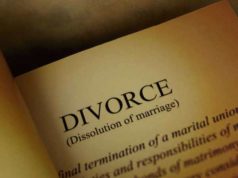
The disbursement of assets and custody based both on equality, as well as the nature of indiscretions is a modern trend in the process of filing for divorce.
An even more modern trend is the advent of no-fault divorce, which allows spouses to split with little worry about the reasons for the fissure.
Historically, women maintained no inherent interest in the estate and earnings of their husbands and upon a request of annulment, no matter for what reason, or how rare this request would be, they would lose any and all rights in relation to his holdings.
Marriage in the Western world became a legal basis predicated on religious mores and beliefs.
Although an annulment of marriage was not hard to achieve, the social underpinnings, except for in extreme situations, made actual divorce a rare practice.
Secular leadership began to push throughout Europe not long after the Protestant Reformation, calling for marital reform across the board.
Although divorce settlements became easier to obtain, the decision rested with the man due to the economic sustenance they provided women.
A common fear of women seeking divorce resulted from their perceived inability to pursue a divorce in any logical realm.
Until true divorce reform occurred during the mid-nineteenth century, women maintained no rights in marriage.
They lost all their possessions to their husbands and maintained no legal entitlement to their children.
After this point, divorces could still only claim a basis in adulterous husbands, and women still claimed no recourse against horrendous abuse and neglect.
In America, not until the mid-20th century did true marital and divorce reform occur.
At this point, women finally maintained certain rights in regard to employment and wage-holding eventually leading to further recourse in divorces.
At this point, claims regarding wrong-doing in marriage required evidence and the plaintiff maintained the burden of proof in divorces.
Many states held onto this doctrine continuing to base the law surrounding divorces on former ideas based on religious practice more than proper handling of jurisprudence.
Not until the feminist movement took hold and the pressures on divorce reform became irrefutable did any form of no-fault divorce emerge.
In part, this change was due to inconsistent practices between the states, where a married couple could wed in New York but then be forced to divorce in Nevada because of institutional emphasis on the sanctity of marriage more than the logistics of disagreement.
Modern arguments over the nature of divorce and the attacks on marriage appear unwarranted in response to the legal ramifications of the institutions.
The legal separation of individuals that wish it so cannot remain forced into cohabitation because of another belief in the necessity of marriage.
An increase in divorces may represent a troublesome progression, but rather than stamping out the possibility, education concerning the reality of marriage at the forefront appears more logical.





















